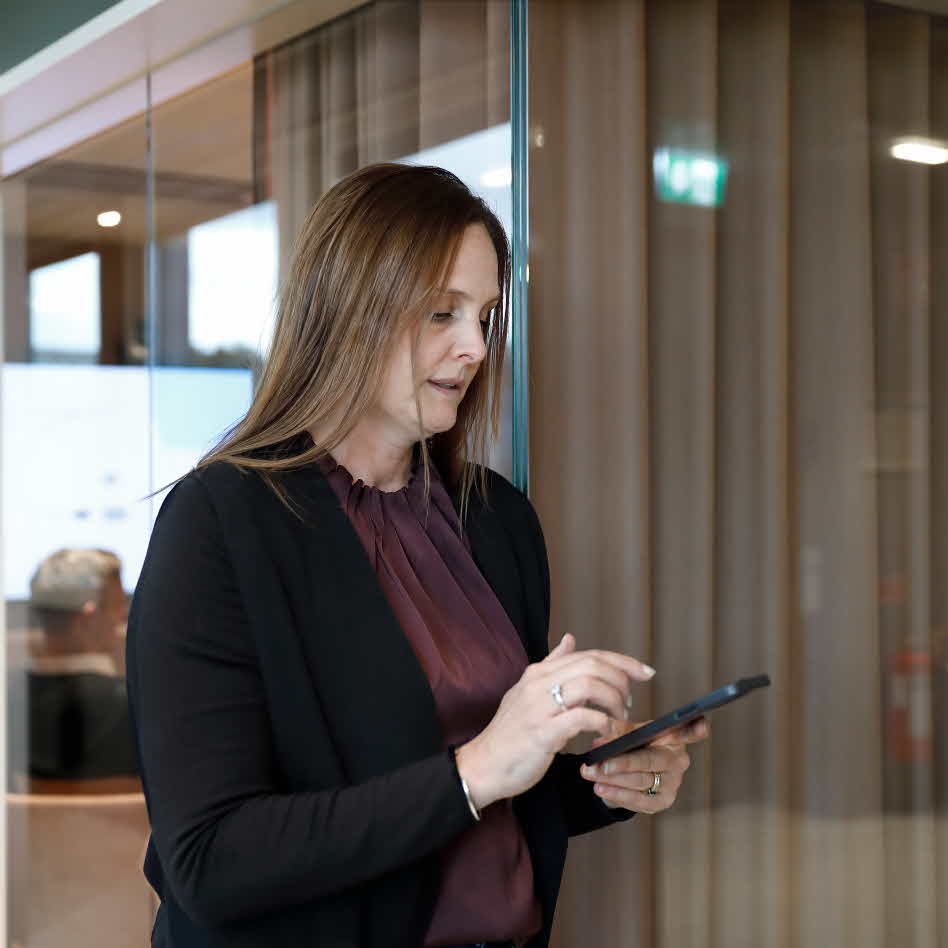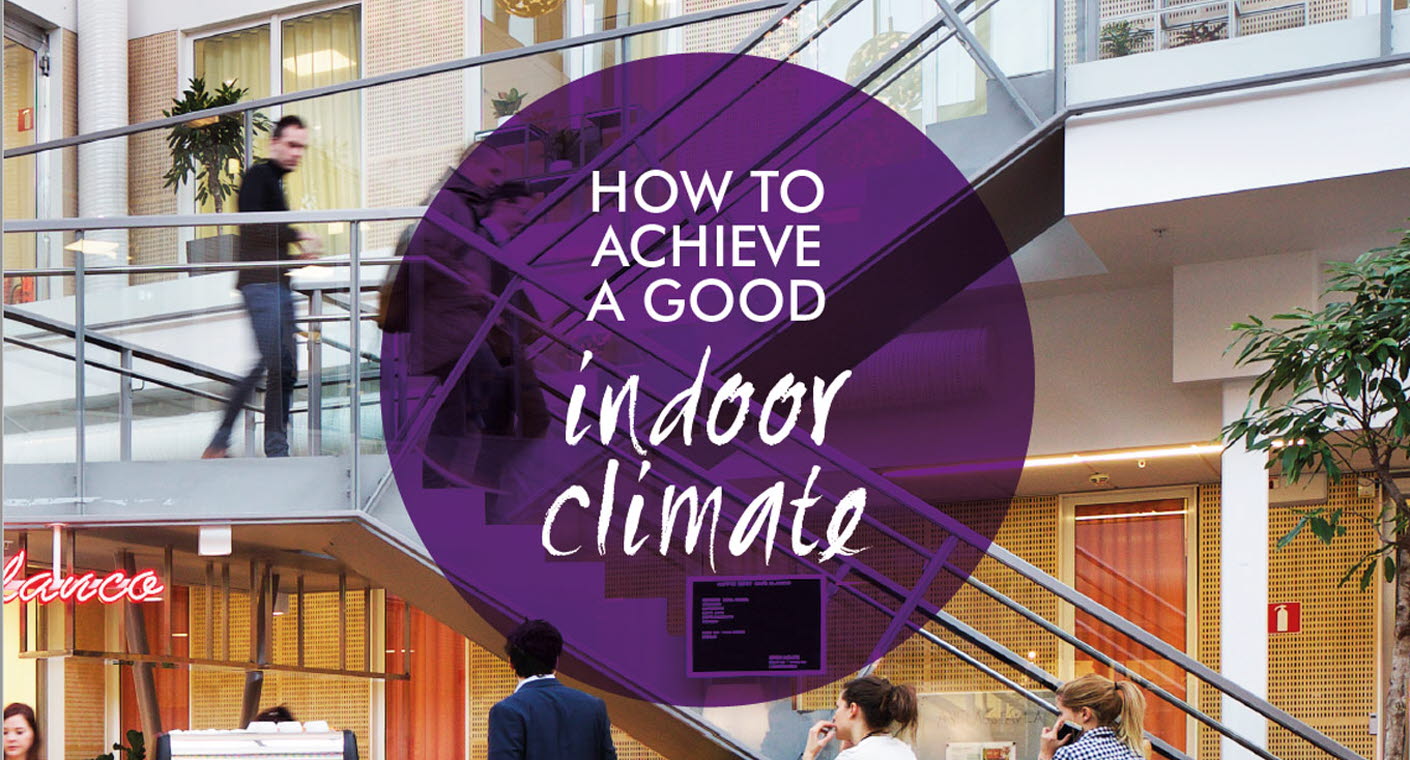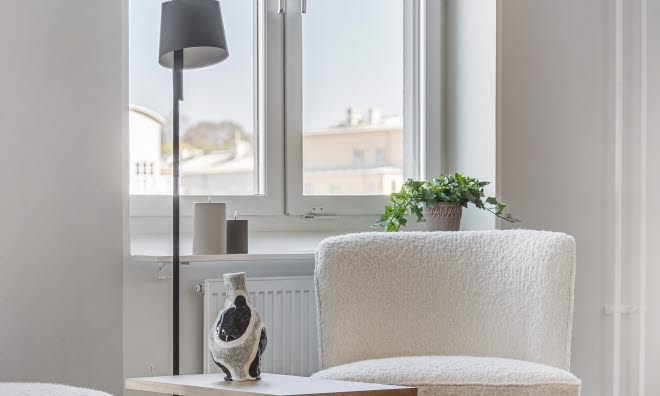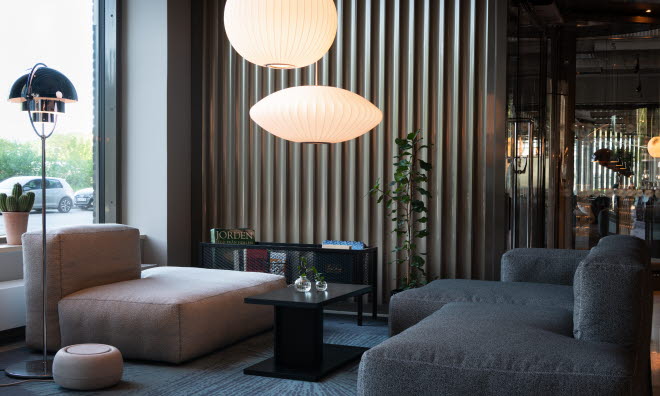At Fabege, our ambition is to always deliver the best possible indoor climate, taking long-term sustainability into consideration. Here, we will explain how people experience temperatures differently, and what you can do to influence this.
Indoor climate

How do we design your room temperature?
Temperature variations
In areas with work spaces and meeting rooms, the temperature should always be at least 21 degrees Celsius.
However, in some cases buildings are not able to maintain this temperature, which is due primarily to the outdoor temperature. Our buildings are typically built to maintain
the proper temperature indoors if the outdoor temperature is between -18 degrees Celsius in the winter and +27 degrees Celsius in the summer. If the outdoor temperature exceeds +27 degrees Celsius, the indoor temperature will rise by the same extent, and similarly, when the temperature falls below -18 degrees Celsius, the indoor temperature will fall by the same extent. For example, it is permissible for the temperature to be +26 degrees inside if it is +28 degrees outside.
However, the temperature may vary slightly within the range of approximately +21 to +25 degrees Celsius, depending on sunlight or if there are many people in the same room. For us to be able to provide you with the best possible climate, it is important that computers and other equipment are energy efficient, and also to ensure the number of people per room does not exceed what the facility was built for.
Quality control
To ensure quality, the performance of the climate system is continuously checked in our operations and monitoring system. We conduct ongoing preventive maintenance and every three years a mandatory ventilation check is carried out.
Everyone is different...
Different individuals perceive temperatures differently, and there can be a number of other factors at play as well. What may feel cold to one person could feel perfectly acceptable to another. The perceived climate is also affected by humidity, what we are doing, and the clothes we are wearing. It is also important to remember that a thermostat usually only measures the air temperature, while we feel both air movements and heat radiation on surfaces.
Active Annica
No matter what the indoor temperature is, Active Annica is rarely cold. She often finds reasons to leave the workplace and rarely sits for long.

Warm Victor
Often has rolled-up sleeves, or a polo or T-shirt. He is often the one to open the office window or turn down the temperature on the thermostat in the premises.

Frozen Franz
Frozen Franz talks about the temperature often. He often wears warm clothes inside, like wool sweaters and cardigans. It is usually Frozen Franz who raises the temperature in the premises.

Sedentary Sara
The opposite of Active Annica. At the office, she often has an extra sweater or thick blanket. Sedentary Sara is often cold in the afternoons.

What contribution can you make to influence your indoor climate?
Furnish properly
How the office is furnished affects our perception of the indoor climate. This is a natural aspect to take into account when a tenant moves in. For example, work spaces are not positioned right next to windows, because it will of course be hotter there in the summer and colder in the winter. This can easily be forgotten if you expand later and need more work spaces in the same area. It can also be a good idea to review the lighting when refurnishing. Just like everything else, this is positioned to take account of the work spaces that were planned as part of the tenant customisation process.
If you invest in new lighting or other fixtures, it is also worth checking how much heat they produce. If the heat emissions increase, the ventilation may not be sufficient to maintain a comfortable indoor temperature. Remember also not to position work spaces right by the system’s cooling baffles, as the temperature there is lower.
Adapt clothing
Wear clothing that is suitable for the season. If the outdoor temperature is -10 degrees Celsius, the indoor temperature is designed for +21–25 degrees Celsius. In this case, a short-sleeved shirt may be too cold. If the outdoor temperature is +27–30 degrees Celsius, the indoor temperature is designed to be +25–28 degrees Celsius, and in this case a short sleeved shirt works well, while a thick wool sweater will be too warm.
Level of activity affects perception
Research shows that people who stand while working perceive the temperature to be 3 degrees higher than people who sit. Naturally, someone who is very active throughout the working day will perceive it to be warmer than someone who is sedentary while working.
Humidity and perceived temperature
One factor that may have an effect is humidity. When the air outside is humid, it feels stuffy and warm inside during summer, while in winter it may feel cooler than the displayed temperature. Humidity depends on external factors and is not something we can influence.
Reduce incoming sunshine for a lower temperature
In some of our buildings, a climate shield is installed to reduce sunlight in the premises. This climate shield should not be confused with shades (Venetian blinds). In summer, this can be used to shield the sunlight to prevent it from becoming too warm inside, while in winter it may be used to let in sunlight to help warm up the premises.
Hot, sunny days in summer are rarely completely cloud-free. To prevent it from becoming too dark in the premises, the climate shield therefore goes up when it becomes cloudy for a moment, and then comes back down when the sun comes out again. It’s angle can also be changed, depending on where the sunshine is falling, for example. There is a delay to prevent the climate shield from going up and down too much all the time (even if it may already seem that way sometimes). In places where employees are bothered by the sun, as a tenant you can set up the sun shade of your choice, such as Venetian blinds, in order to solve the issue.
Keep windows closed
An effective way to quickly air a meeting room is to briefly open a window. However, it is important to remember that a window left open for a longer period of time turns off the ventilation system. For optimal functioning of the ventilation system, it is therefore better to keep all the windows closed as much as possible.
Indoor climate brochure
This brochure aims to improve understanding and knowledge of how people experience temperature differences.
We also explain how climate systems work and how they are designed, and offer clear advice on how you can influence your own experience of indoor climate.


